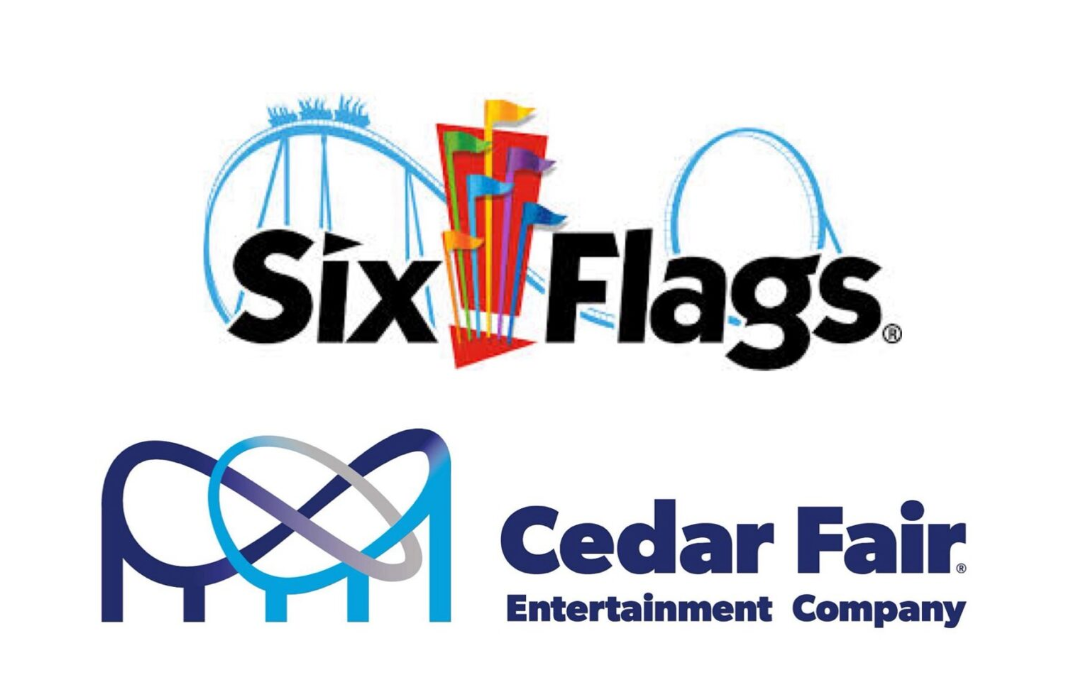The speculation of a merger between Cedar Fair and Six Flags has been confirmed by the CEO, with expectations for the monumental deal to be finalized by this summer. The two titans in the amusement park industry have been the subject of considerable conjecture in recent months, given the transformative potential of their union. The merger is anticipated to create a colossal entity in the entertainment sector that could reshape the landscape of the industry.
The CEO, in a recent interview, affirmed the ongoing negotiations and the projected timeline, assuaging doubts about any possible delay. The consolidation is expected to amalgamate the strengths of both organizations, leveraging their combined resources to enhance the amusement park experience for millions of their patrons worldwide. The synergy of Cedar Fair’s widely admired customer service and Six Flag’s groundbreaking attractions could potentially usher in a new era of innovation and thrill in the entertainment industry.
While there are still some hurdles to overcome, the CEO reassured stakeholders that diligent efforts are being made to address any concerns and pave the way for a smooth transition. The merger is being viewed as a strategic move that is likely to boost the operational efficiency of both entities, fostering improved profitability and long-term sustainability. Furthermore, it’s anticipated that the amalgamation of these two industry leaders could potentially expand their collective market reach, creating new opportunities for growth and expansion.
Despite the excitement surrounding the merger, there are concerns about the potential impact on employees, park-goers, and competition within the industry. However, the CEO affirmed that the overarching goal of the merger is to create an enhanced experience for their patrons, and they are committed to ensuring that the transition will be handled with utmost consideration for all concerned parties.
The potential merger of Cedar Fair and Six Flags is indeed a significant event in the world of amusement and theme parks. The consolidation is expected to bring about a paradigm shift in the industry, setting new benchmarks for innovation, customer service, and overall entertainment value. The CEO’s confirmation regarding the anticipated timeline has set the stage for an exciting summer, as the world awaits the birth of a new behemoth in the amusement park industry.

Overview of Cedar Fair and Six Flags Merger
Cedar Fair and Six Flags, two titans in the amusement park industry, have made headlines with their potential merger. This move could potentially reshape the landscape of amusement and theme parks in North America. Six Flags, known for its heart-stopping roller coasters and diverse array of attractions, initiated the merger by proposing a cash-and-stock transaction to Cedar Fair.
Cedar Fair, the owner of several well-known parks including Knott’s Berry Farm and Canada’s Wonderland, has a reputation for providing high-quality family entertainment and is also renowned for its thrilling rides. The combination of these two industry giants would create an unparalleled portfolio of amusement parks, water parks, and resorts across North America.
However, such a merger is not without its challenges. The integration of two different corporate cultures, potential antitrust scrutiny, and the sheer scale of combining operations are among the hurdles that need to be overcome. Additionally, the response from park-goers, who may have strong allegiances to one brand or the other, remains to be seen.
Despite these hurdles, the potential benefits of the merger are significant. The combined entity could leverage its size to negotiate better deals with suppliers, increase buying power, and potentially offer a more diverse range of attractions. It could also result in cost savings through operational efficiencies and the elimination of duplicate functions.
The proposed merger between Cedar Fair and Six Flags is a monumental event in the amusement park industry. While the outcome remains uncertain, it’s clear that this potential consolidation could change the landscape of the industry in significant ways. Despite potential difficulties, the potential rewards could be immense, offering a new chapter in the continuing evolution of amusement parks.
CEO’s Confirmation of Merger Anticipation
In an exciting turn of corporate events, the CEO confirmed that the company is indeed anticipating a merger. The anticipation has been fueled by recent strategic discussions with potential partners, sparking speculations about the company’s future trajectories. The CEO, in his statement, highlighted the benefits of such a corporate action, mentioning how it will provide an opportunity to enhance the company’s competitive position in the market. He believes that this decision will not only expand their customer base but will also provide access to new markets and technologies. The news of the potential merger has stirred the company’s stakeholders, with many viewing it as a positive step towards growth and expansion.
The CEO further assured that the merger will align with the company’s long-term strategic goals and will yield significant value for shareholders. However, the details about the potential partner and the timeline of the merger remain undisclosed. The executive team, along with the CEO, are diligently working on a seamless integration plan to ensure a smooth transition and minimal disruption to ongoing business operations. Though the merger anticipation has created a buzz in the business world, the CEO urges patience and support from all stakeholders as they navigate through this transformative phase. The CEO’s confirmation of merger anticipation has certainly set the stage for a new chapter in the company’s history, one that promises prosperity and progress.

Timeline and Expectations for the Merger
The merger process involves a series of intricately linked steps that need to be undertaken within a certain timeline and with specific expectations. The journey usually begins with pre-merger talks and strategic planning sessions, where the involved parties discuss key details about the merger, such as the structure of the new entity, the roles of key stakeholders, and the integration plan. Once an agreement is reached, a letter of intent is signed, marking the commencement of the due diligence process. This phase can last anywhere from a few weeks to several months, depending on the size and complexity of the companies involved, as well as the scope of the due diligence.
Once due diligence is successfully completed and the parties are satisfied with the findings, a definitive agreement is drawn up and signed. This agreement contains the final terms and conditions of the merger, including the purchase price and the manner of payment. Upon signing the definitive agreement, regulatory approval is sought. The duration for obtaining regulatory approval varies greatly depending on the jurisdiction and industry involved, but it generally takes up to a few months.
After regulatory approval is acquired, the merger is finalized and the integration process begins. This involves combining the operations, systems, and cultures of the merging companies to form a cohesive unit. This is perhaps the most challenging part of the merger process and can take several months to a couple of years to complete.
The expectations of a merger are manifold. On a financial level, the objective is to create a company that is more valuable than the sum of its parts. This could be achieved through synergies, cost savings, or increased market share. On an operational level, the goal is to create a company that can operate more efficiently and effectively, thereby enhancing customer satisfaction and competitive advantage. Lastly, on a cultural level, the aim is to create a unified and harmonious work environment that fosters creativity, collaboration, and employee satisfaction.
Potential Impacts on Theme Park Industry
The theme park industry is susceptible to various potential impacts that could either propel its growth or hamper its progress. One significant influence is technological advancements. With the rise of virtual reality (VR) and augmented reality (AR), theme parks are compelled to incorporate these innovative technologies into their attractions to stay competitive. These technologies can height gooden visitor experiences, making rides more immersive and interactive, thereby attracting more patrons. However, this also means higher costs for park operators in terms of investment and maintenance.
Another crucial factor is climate change. Increased frequency and intensity of extreme weather events may disrupt the operation of outdoor theme parks, leading to revenue losses. Furthermore, the rising awareness and concern about environmental sustainability may pressure theme parks to adopt eco-friendly practices. Parks that fail to respond to this trend may face reputational damage and decreased patronage.
Additionally, changes in demographics and consumer behavior pose significant impacts. The aging population and the shift in leisure preferences among younger generations can affect the demand for theme park entertainment. As younger generations lean towards experiential travel and unique, personalized experiences, theme parks need to constantly innovate and tailor their offerings to cater to these evolving demands.
The COVID-19 pandemic has also profoundly impacted the industry, causing massive disruptions in operations due to travel restrictions and social distancing measures. While these challenges are temporary, they highlight the vulnerability of the industry to global health crises. Moreover, they underscore the need for theme parks to build resilience and adaptability into their business models, such as incorporating health and safety measures, offering virtual experiences, and diversifying income sources.
Finally, the growing competition from other forms of entertainment, such as online gaming and streaming platforms, is a potential impact. To stay relevant and appealing, theme parks must continually enhance their attractions and provide a unique value proposition that can’t be replicated digitally.
These potential impacts present both challenges and opportunities, shaping the future of the theme park industry. It is up to the industry players to strategically navigate these influences to ensure their sustainability and growth.

Market and Investor Reactions
Market and investor reactions often determine the trajectory of the economy. These reactions are influenced by a multitude of factors such as political events, economic indicators, technological advancements, societal trends, and corporate news. Economic indicators such as inflation rates, GDP growth, unemployment rates, and consumer confidence indexes can trigger significant reactions in the market. When these indicators signal positive economic prospects, it often leads to bullish market sentiments, triggering investors to buy stocks thereby pushing prices up. Conversely, negative indicators can lead to bearish sentiments, prompting investors to sell off stocks and leading to a decline in market prices.
Political events such as elections, policy changes, and geopolitical tensions also significantly influence market and investor reactions. For example, an election result may lead to changes in fiscal and monetary policies, which can either increase investor confidence or lead to market instability, depending on the perceived impact of these policies on the economy. Additionally, geopolitical tensions can cause market volatility as investors react to uncertainties and potential risks.
Technological advancements and societal trends also shape market and investor reactions. For instance, the rise of digital technology has led to the growth of tech stocks, attracting a plethora of investors. Meanwhile, societal trends such as increased awareness about climate change have led to a surge in investments in renewable energy stocks.
Corporate news such as earnings reports, mergers and acquisitions, and product launches also trigger market and investor reactions. Positive news can boost investor confidence, leading to increased stock purchases, while negative news can cause a sell-off. Thus, market and investor reactions are shaped by a complex interplay of various factors, reflecting the multifaceted nature of the global economy.
Conclusion: Looking Ahead to the Merger
In conclusion, as we look towards the impending merger, it’s imperative to acknowledge the potential opportunities and challenges that may arise. The fusion of two companies can be a monumental task, requiring strategic planning, effective communication, and the seamless integration of business cultures and operations. Yet, it also presents an excellent chance to combine resources, skills, and market reach to forge a stronger entity. Key aspects to be considered include ensuring smooth transition, safeguarding employee morale, maintaining customer loyalty, and aligning the merged entity’s goals with market demands and shareholder expectations. The process may require radical changes, but with careful management, it can also pave the way for exponential growth, greater innovation, and enhanced competitive advantage.
As we step into this new era, our focus should be on creating a mutually beneficial partnership that capitalizes on the strengths of both companies while addressing the weaknesses. It is essential to have a clear vision for the future and to be prepared for the hard work that will come with its realization. The road ahead may be challenging, but it is also filled with immense potential. This merger is not just about surviving, but thriving in the industry, setting new benchmarks, and creating an entity that is greater than the sum of its parts. The future indeed holds great promise if we approach it with the right mindset, determination, and adaptability.
